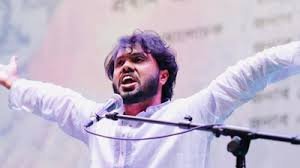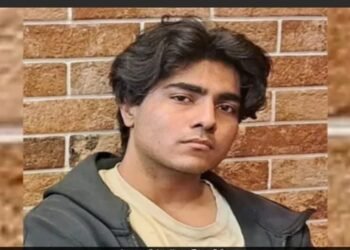Hezbollah, the Islamist terrorist organization in Lebanon, officially announced on September 28 that its leader, Hassan Nasrallah, was killed in a large airstrike carried out by Israel on the group’s base in Beirut on Friday. Earlier, the Israel Army reported that it had eliminated the influential 64-year-old Islamist leader in an operation named ‘Operation New Order’.
In a statement announcing the death, the Iran-backed outfit said Nasrallah “has joined his fellow martyrs”. Subsequently, Hezbollah’s Al-Manar TV began airing Quran verses mourning the death of Nasrallah, news agency Reuters reported.
The passing of Nasrallah deals a significant blow to Iran’s ability to influence the region. Due to his unmatched importance among Iranian resistance leaders, Nasrallah’s death could be seen as an even greater setback for Iran compared to the losses of Major General Qassem Soleimani in 2020 and Hamas’ political chief Ismail Haniyeh earlier this year.
Nasrallah played a crucial role in transforming Hezbollah into a political-militant force in the region during his over thirty years of leadership. Israel is optimistic about weakening the group’s power structure and pushing them further from its borders now that he has been eliminated.
Also read: Lebanon urges ceasefire with Israel as strikes at Houthi targets continue
Who was Hassan Nasrallah?
Nasrallah, the oldest among nine siblings, was born in 1960 and was raised in Beirut’s impoverished eastern Bourj Hammoud area, home to a mix of Christian Armenians, Druse, Palestinians, and Shias. Abdul Karim, his father, who sold fruits and vegetables, was originally from the village of Bazouriyeh in southern Lebanon.
In 1975, when a civil war began in Lebanon, Nasrallah, at 15 years old, became a member of Amal and began to rally fellow members in Bazouriyeh. The year after, he relocated to Najaf in Iraq to attend the renowned religious seminaries there.
In Najaf, Nasrallah encountered the two individuals who would arguably shape his life the most: Abbas al-Musawi, a Lebanese cleric and co-founder of Hezbollah, who became his mentor and friend, and Ayatollah Ruhollah Khomeini, leader of Iran’s Islamic Revolution in 1979.
After a crackdown on Shia Islamists in Iraq by the Ba’athists, Nasrallah and Musawi went back to Lebanon in 1978. Nasrallah departed from Amal in 1982 because he believed the movement was no longer capable of resisting the invading Israeli forces.
He became a member of the paramilitary group Islamic Amal, which was established by Musawi and supported by Iran’s Revolutionary Guards. Islamic Amal, the most notable and impactful Shia militias in Lebanon, orchestrated suicide attacks at the US Embassy in Beirut and American and French peacekeepers’ barracks, resulting in the death of 360 individuals, among them 241 American troops.
In 1992, following Musawi’s death by Israel, Nasrallah took over as Hezbollah leader at 32 years old. His response involved Hezbollah bombing Israeli embassies in Turkey and Argentina, which resulted in the deaths of 29 individuals.
Also read: Hezbollah confirms chief Nasrallah killed in Israeli airstrike on Beirut
Who will lead Hezbollah after after Hassan Nasrallah’s death?
Two prominent individuals believed to be potential replacements for Nasrallah are Hashem Safieddine and Naim Qassem. Here is what you need to know about them:
Hashem Safieddine

Safieddine is believed to be the top candidate to be the next secretary-general of Hezbollah, as he is the head of the executive council and a cousin of Nasrallah.
Born in 1964 in the southern village of Deir Qanoun en-Nahr, near Tyre, Safieddine attended Shia religious schools in Najaf, Iraq, and Qom, Iran, where he studied theology alongside Nasrallah. Both became members of Hezbollah soon after the organization was established.
In addition to leading the executive council, Safieddine plays a crucial role on the group’s Shura Council and is also the leader of its Jihadi Council. His significance has caused him to become a foe of Hezbollah’s international opponents. Safieddine has been labeled a terrorist by both the United States and Saudi Arabia, leading to his assets being frozen.
Naim Qassem

The 71-year-old Qasseem serves as Hezbollah’s deputy secretary-general, frequently known as the group’s “number two”.
He was born in Kfar Kila, a village in southern Lebanon’s Nabatieh governorate, which has been targeted by numerous Israeli attacks, particularly since last October.
Qassem has been involved in Shia political activism for a significant period of time. During the 1970s, he became a member of the Movement of the Dispossessed led by the late Imam Musa al-Sadr, which later merged with the Amal Movement, a Shia organization in Lebanon. Afterward, he departed from Amal and proceeded to assist in establishing Hezbollah during the early 1980s, emerging as one of the key religious scholars within the group.
Also read: 50 children among 558 killed in deadly Israeli airstrikes in Lebanon
Qassem was influenced by Ayatollah Mohammad Hussein Fadlallah, a highly regarded religious figure, and in turn, he has been teaching religious courses in Beirut for many years.
Qassem became deputy secretary-general in 1991, serving under Secretary-General Abbas al-Musawi, who was also assassinated by Israel.
He has been a significant figure in Hezbollah for many years, holding a prominent position in the group and serving on its Shura Council.













